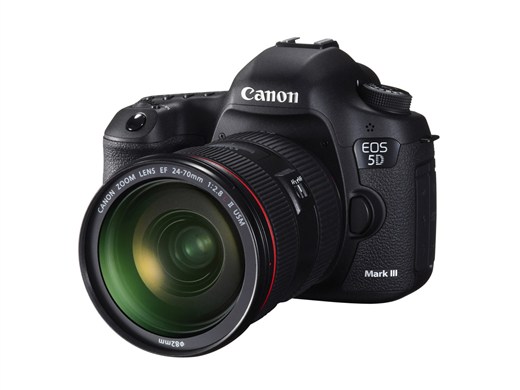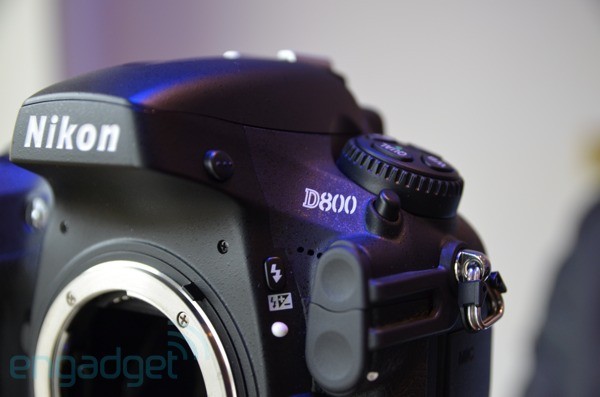Nikon D800 vs Canon 5D III – first impressions
I will start off by saying this is not a full scale, hands on technical review. This is from the point of view of a Nikon shooter who has been patiently waiting for something from Nikon while seriously considering making the jump to Canon. With the major releases in the past few weeks from both Canon and Nikon there is much to consider.
Here are the technical specs:
NIKON D800 – $3000
• 36.3MP CMOS sensor
• 15.3MP DX-format capture mode
• 25MP 1.2x Crop mode
• 51-point AF system with 15 cross-type sensors, rated to -2EV* (compared to -1EV)
• ISO 100-6400 extendable to ISO 25,600 equiv. (same as D700)
• 1080p video at 30, 25 or 24 frames per second, up to 24Mbps, with uncompressed HDMI output and audio monitoring options*
• 3.2″, 921,000 dot LCD with anti-fog layer*
• Maximum 4fps continuous shooting in FX mode, 6fps in DX mode**
• Advanced Scene Recognition System with 91,000 pixel metering sensor*
• ‘Expeed 3’ Image Processing*
• Dual-axis Virtual Horizon (on LCD screen/viewfinder)*
* Same or almost identical to Nikon D4
** Maximum frame rate in DX mode is dependant on power source
I will limit the discussion to the D800 as the D4 is intended as a specialist tool for capturing images quickly in all weathers and light conditions, whereas the D800 has been designed to have a much broader potential appeal. The features that it lacks compared to the D4, such as ultra-high ISO shooting, very fast framerates, QXD card compatibility, 2000+ image battery life and built-in Ethernet, might matter to some professionals but are unlikely to be deal-breakers for most of us, especially at twice the price.
CANON 5D MKIII – $3500 ($1000 more that the original MkII)
• New 22.3MP full-frame CMOS sensor with a gapless micro-lenses designed to capture more light
• Individual pixel size is 6.2 microns (compared to 6.4 microns on 5D Mark II)
• ISO 50-102,400 range with on-chip noise reduction
• Digic 5+ image processor
• 61-point High Density Reticular Autofocus System with up to 41 cross-type points and five dual cross-type points (depending on the lens)
• 6 frames-per-second (fps) continuous shooting
• AI Servo III
• Silent and low vibration shooting modes
• In camera HDR capabilities (composites three exposures into one)
• iFCL 63-Zone Dual Layer Metering
• 150,000 cycle shutter durability
• More responsive shutter
• More weatherproof body than 5D Mark II (enhanced dust and weather resistance)
• 3.2-inch Clear View II 1,040,000-dot LCD
• Comparative playback
• 100% coverage in viewfinder with on demand grid
• Dual Compact Flash and SD card slots
• Longer battery life (950 photos on one charge)
• 1-5 star image rating button on back (compatible with Adobe and Apple software)
• Full 1080p HD video at 24p (23.976), 25p, and 30p (29.97) fps
• 720p HD recording at 60 (59.94) and 50 fps
• Eight channel readout designed to double speed of image data for better video quality and 6fps still speed
• H.264 video compression format available to speed up post production work
• Intraframe (ALL-I) compression for easy editing and inter frame (IPB) compression for better data storage
• Two methods of SMPTE-compliant timecode embedding, Rec Run and Free Run
• Ability to video record continuously for up to 29 minutes and 59 seconds across multiple 4GB files
• Internal monaural mic and stereo mic input
• Manual audio level control with 64 levels
• HDMI out
• Headphone jack
• Wind filter
Mega pixel count aside the camera’s are similar. This is what Chuck Westfall, Canon USA’s Technical Advisor in the Professional Engineering & Solutions Division, had to say about the new 5D:
He estimated a “two stop improvement” in noise reduction when shooting JPEGs and HD video with the 5D Mark III. As an example, Westfall claimed that JPEGs shot with the 5D Mark III at ISO 25,600 would be as good as those shot at ISO 6400 on the previous camera. “There’s also much better video quality in terms of decreased moiré and reduced noise,” he added.
RAW images shot with the 5D Mark III will also be cleaner than the previous but not a full two stops better, Westfall said.
The new 61-point High Density Reticular Autofocus System, which is similar to the AF array in the 1D X, should also be a significant improvement. The 5D II’s AF system was slow and out-of-date even at the time it came out.
The D800, on the other hand, shares basically the same form factor as its predecessor the D700. Both models have a built-in flash and lack the integrated vertical grip of Nikon’s top-end DSLRs, which is available instead via an accessory battery grip. There are differences though – some minor, some major.
The most obvious difference from the perspective of core functionality are a massive increase in resolution, from 12 to 36MP, which comes with a significant boost in processing power, and the addition of video mode. The D800’s video mode is lifted almost completely from the professional D4 and boasts 1080p30 resolution with the option to output uncompressed footage via HDMI.
From purely a functional cost effective solution for primarily shooting high quality stills and for having a serious solution for video production here are where the chips fall for me. The main differences that matter:
Megapixels – roughly 36MP vs 22MP. For the first time Nikon has gone after the visceral megapixel race. This certainly does place the D800 in the medium format market and allows for more creative cropping in post while keeping better resolution.
ISO – It looks like the Canon 5D really went after this spec in terms of trying to improve noise and picture quality. Certainly on paper the native and boosted ISO on the Canon out specs the Nikon. How that translates to everyday shooting will be key.
HDMI – While both camera’s support HDMI output, Nikon has gone ahead with an uncompressed signal output. This is very useful and was only available on the Canon as a firmware hack in the previous model.
Autofocus – Canon has really taken a step forward to address the serious autofocus issues with the MKII. It now boasts a 61-point high-density reticular AF (up to 41 cross-type points) system, while Nikon has an Advanced Multi-CAM 3500FX with 51-points (up to 15 cross-type points). I am confident both cameras would perform autofocus duties well.
It will be interesting to see stills and video from both camera’s when they become available to really get a sense as to how they perform. For my needs the higher megapixel count and video support with uncompressed HDMI output is where I believe my dollars will go. This also makes the decision easier as I don’t need to sell all my Nikon lenses. Oddly enough, until the Canon release yesterday, that was very much an option. Let’s see what the photos and video look like.



5 Comments
Gavin Steiner
March 2, 2012I’m very curious to see how the still photo and video quality stack up. Huge megapixel difference, however as has been seen before, more pixels don’t ALWAYS translate to sharper stills.
Having already invested in Canon lenses, my hope is that the Mark III doesn’t fall too short.
admin
March 2, 2012Hi Gavin, if you have Canon lenses going with the 5D is an easy decision. I am sure it will be a fine camera. Besides the autofocus, the MKII was already a great camera. For most work 12-17MP is more than enough information. I believe 17MP roughly translates to the resolving power of a 35mm negative. We are well past that point. As i said in the post all the 35MP buys you is greater cropping options in post. The downside being more processing power required and larger storage. You are quite right though, it does NOT automatically get you sharper images. Could be the opposite actually.
Incidentally, a good deal of the images on this site were shot with a 12MP camera.
Rob
5D Mark III hands-on reviews round-up | CanonWatch
March 9, 2012[…] overview of the specs. If you want a more detailed comparison among the 5D3 and the D800 then click here to see what arts&letters has to say […]
James
March 10, 2012Nice thoughtful comparison- a small error to correct though, the 5Dmkii has never had a clean HDMI output available as a firmware hack. It’s been something of a holy grail for the community, but as far as I’m aware never achieved by the Magic Lantern guys? If you have a source for a working hack, please let me know!
admin
March 10, 2012Hi James, thanks for the reply. That may very well be the case. I had been told that by a large retailer here in Toronto a few years back but never knew for certain because I don’t own the Canon. It do know it was a point of frustration for the DSLR community shooting video and would have thought uncompressed HDMI be a given on the MKIII. I suppose Canon had other priorities.
What I do find humorous is that when the MKIII was released, the ink was barely dry on the press release and everyone was belly aching about the camera not being 2K. Never satisfied.